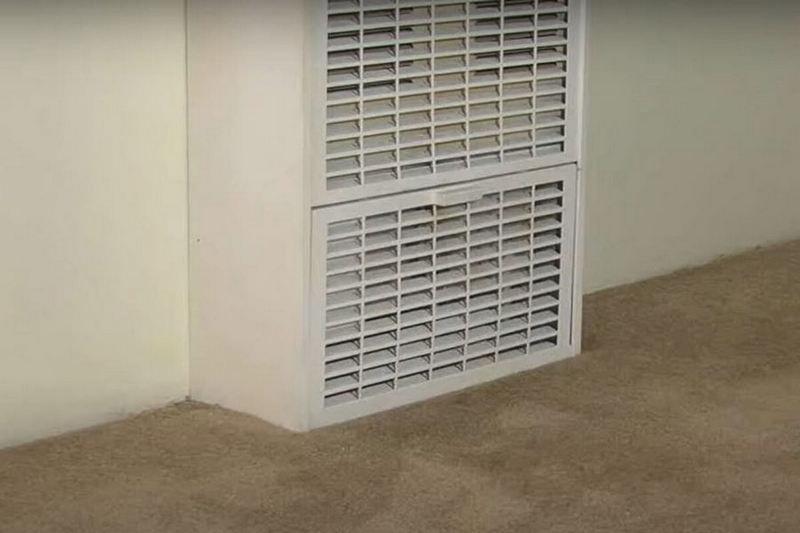If your apartment has a central heating system, chances are good that you don’t have to worry about turning on the heat. In most cases, the landlord or property manager will take care of this for you. However, if your apartment has an individual heating unit, you’ll need to know how to turn it on.
Here’s a quick guide:
1. Find the thermostat. This is usually located near the door leading into your apartment.
2. Set the thermostat to your desired temperature.
3. Wait for the heater to kick on and enjoy!
- Check your thermostat to make sure it is on the heat setting
- If your thermostat has a battery, check to see if it needs to be replaced
- Find your apartment’s main breaker box and make sure that the power is turned on to the heater
- Check the emergency shut off switch for your heater, if there is one
- This switch is usually located near the heater itself
- Turn on the apartment heater by flipping the switch to the “on” position
How to Turn on Wall Heater in Apartment
If you need to turn on your wall heater in your apartment, there are a few things you need to do first. Wall heaters can be dangerous if they are not used properly, so it is important to follow these steps carefully.
1. First, find the thermostat for your wall heater.
This is usually located near the heater itself.
2. Once you have found the thermostat, make sure that it is turned to the “Off” position.
3. Next, locate the power switch for your heater.
This should be nearby the thermostat as well.
4. Flip the power switch to the “On” position and wait a minute or two for the heater to warm up.
5. Finally, turn the thermostat to your desired temperature and enjoy warmth!
How to Turn on Radiator Heater in Apartment
Assuming you would like a blog post on how to safely turn on a radiator in an apartment:
If you live in an apartment, chances are you have a radiator heater. Radiator heaters are a type of heating system that uses hot water or steam to heat your home.
While they are very effective at keeping your home warm, they can also be dangerous if not used correctly. That’s why it’s important to know how to safely turn on your radiator heater.
Here are the steps you need to follow to safely turn on your radiator heater:
1. Locate the thermostat for your radiator heater. This is usually located near the radiator itself. If you can’t find it, check with your landlord or building manager.
2. Once you’ve found the thermostat, make sure it is set to “Auto” mode. This will ensure that the temperature of the water in the radiator is regulated automatically and prevents it from getting too hot.
3. Next, find the knob on the side of the radiator that controls the flow of hot water or steam into the unit.
This knob is usually marked with numbers or symbols that indicate how much heat is being emitted by the unit (low, medium, high). Start by turning this knob to the lowest setting first and then slowly increase it until desired level of heat is achieved. Remember, always err on the side of caution when adjusting this knob as too much heat can be dangerous!
4. Finally, once you have everything set up correctly, simply turn on your radiators by flipping their switch from “Off” position to “On” position (usually located at bottom front corner of each unit). You may hear hissing or knocking noises coming from your radiators as they start up – this is normal and nothing to be concerned about!
How to Turn on Electric Heater in Apartment
If you’re like most people, you probably don’t think much about your electric heater until the weather starts to turn cold. Then, all of a sudden, you realize that you need to figure out how to turn it on! If you live in an apartment, this can be even more challenging, since there may not be anyone around to help you out.
Here are some tips for turning on your electric heater in an apartment:
1. Check your thermostat – Most apartments have a central heating system that is controlled by a thermostat. In order to turn on your heat, you will need to find the thermostat and set it to the desired temperature.
If you’re not sure where your thermostat is located, ask a neighbor or check with your landlord.
2. Know how your heater works – There are two main types of electric heaters: baseboard heaters and space heaters. Baseboard heaters are usually located along the bottom of a wall, while space heaters can be placed anywhere in the room.
Before trying to turn on your heater, make sure you know which type you have so that you can follow the correct instructions.
3. Follow the manufacturer’s instructions – Once you know how your heater works, follow the manufacturer’s instructions for turning it on safely. This is important because each type of heater has its own unique set of safety precautions that must be followed in order to avoid accidents or injury.
4. Be patient – It takes time for an electric heater to warm up a room, so don’t expect instant results! Give yourself plenty of time to get comfortable before cranking up the heat too high – otherwise, you might end up sweating instead of staying warm!
How to Turn on Electric Heater in House
If you’re like most people, you probably don’t think about your home’s electrical system until something goes wrong. But taking a little time to learn about how your home’s electrical system works can save you both time and money in the long run.
One of the most common questions we get here at Mr. Electric is “How do I turn on my electric heater?”
Here’s a quick guide to help you out.
First, locate your circuit breaker box and find the switch that corresponds to your heater. If the switch is in the “off” position, flip it to “on.”
Once the switch is in the “on” position, go to your thermostat and set it to the desired temperature.
Now that you know how to turn on your electric heater, be sure to check out our other blog posts for more tips on getting the most out of your home’s electrical system!
How to Turn on Old Radiator Heater
If you have an old radiator heater in your home, you may be wondering how to turn it on. Here are some steps to follow:
1. Locate the thermostat for the radiator.
This is usually located near the floor on one side of the radiator.
2. Set the thermostat to the desired temperature.
3. Wait for the radiator to heat up.
You may hear a clicking sound as it starts to heat up.
4. Once the radiator is heated, you can feel warmth coming from it and/or see steam rising from it.

Credit: hvacguides101.com
How Do I Control the Heat in My Apartment Radiator?
If you’re like most people, you probably don’t think much about your apartment radiator until it starts making noise or isn’t heating properly. But knowing how to control the heat in your radiator can save you money on your energy bill and keep your home more comfortable.
Most apartment radiators have two valves: a thermostat valve and a shut-off valve.
The thermostat controls the amount of hot water that flows into the radiator, while the shut-off valve allows you to completely turn off the flow of hot water when necessary.
In order to adjust the heat output from your radiator, start by finding the right balance between the two valves. First, open the shut-off valve all the way and then slowly turn on the thermostat until you reach your desired level of warmth.
From there, fine-tune the settings by opening or closing either valve until everything feels just right.
One thing to keep in mind is that it takes longer for a cold room to warm up than it does for a warm room to cool down, so be patient when making adjustments. And if you’re ever unsure about what to do, feel free to contact your building’s maintenance staff for assistance.
How Do You Turn on a Gas Heater?
Most gas heaters have a switch or knob that you turn to the “on” position. You may also need to push a button to ignite the pilot light. Once the pilot light is lit, you can adjust the thermostat to your desired temperature.
How Do I Turn My Heater on for the First Time?
If you’ve never turned on your heater before, it can be a bit confusing. Here’s a quick guide to help you get started:
1. Find the thermostat.
This is usually located on the wall near your heating unit.
2. Set the thermostat to the desired temperature. Make sure to use a comfortable setting – not too hot or too cold!
3. Turn on the power switch for your heater. This may be located near the thermostat or on the actual unit itself.
4. Wait for the heater to kick in and enjoy your warm home!
How Do I Turn on the Heater in My Apartment in Nyc?
In New York City, apartment buildings are required to have a central heating system that provides heat to all units in the building. Most systems are turned on by the building owner or superintendent and cannot be controlled by individual tenants. Some newer buildings have individual thermostats in each unit that can be controlled by tenants, but most older buildings do not.
If your apartment does not have its own thermostat, you can try opening up the vents in your unit to see if that allows more heat to come in. You can also put a blanket over any radiators in your unit to help trap the heat. If you have any questions or concerns about your heating, you should reach out to your landlord or superintendent.
Conclusion
If you live in an apartment, chances are you don’t have control over your own heat. That can be a problem when winter rolls around and you start to feel chilly. But don’t worry, there are a few things you can do to turn on your apartment heater.
First, check with your landlord or management company to see if they offer any type of heating assistance. Some companies will help pay for your heating bill or provide space heaters for residents.
Next, take a look at your lease agreement.
Most leases include a clause about the minimum temperature that must be maintained in the unit. If your unit isn’t being heated to that temperature, you may have grounds to request repairs from your landlord.
Finally, try opening up the windows in your apartment to let some warm air in from outside.
Just be sure to close them back up before it gets too cold!
